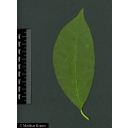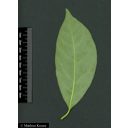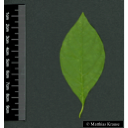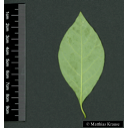Useful information about the taxon (species, subspecies, variety...)
Lindera benzoin (L.) Blume 1851
Lauraceae
- Laurel family (APG IV)Northern spicebush, Benjamin bush
Taxon concept: The Plant List (2010)
Distribution: Canada: Ontario; United States: northeast, northeast-central, Kansas, southern States of the Great Plains, southeast, Florida
Size: 2 - 4 (m)
Flowering period: III - IV
Lindera benzoin (L.) Blume - Accepted: Lindera benzoin (L.) Blume bei Zander 2008; Familie: Lauraceae (Zander 2008)Lindera benzoin (L.) Blume - Accepted: Lindera benzoin (L.) Blume bei The Plant List (2010); Familie: Lauraceae (APG III)Lindera benzoin (L.) Blume - Accepted: Lindera benzoin (L.) Blume bei The Plant List (2014), version 1.1; Familie: Lauraceae (APG III)Lindera benzoin (L.) Blume - Accepted: Lindera benzoin (L.) Blume bei The Plant List (2014), version 1.1; Familie: Lauraceae (APG IV)
- Color of flower
- yellowish
- Flowers
- dioecious; flowers with aromatic scent
- Flower ecology
- insect-pollinated (entomophilous)
- Life form
- shrub
- Leaves
- thin, alternate, obovate to elliptic, 6-15 cm long
- Foliage persistence
- deciduous
- Fruits
- red drupe with one large seed
- Fruit ecology
- animal-dispersed (endozoochorous)
- Soil conditions
- preferentially on moist, rich, acidic to basic soils
- Natural occurrence (habitat)
- low woodlands, swamp margins, streamsides
- Natural propagation (all types)
- vegetative reproduction through root sprouting
- Constraints according radiation (light)
- shade tolerant
- Chemical characters
- contains essential oils
- Usage
- dried fruits can be used as a spice and leaves for tea; due to anti-arthritic, diaphoretic, and emetic properties extracts have been used medicinally and for herbal steam
- Phytopathogenic organisms
- caterpillars of the spicebush swallowtail (Papilio troilus) feed on the leaves
Erhardt, W., Götz, E., Bödeker, N. & Seybold, S. (2008): Der große Zander. Enzyklopädie der Pflanzennamen. Band 2. Arten und Sorten. Eugen Ulmer KG, Stuttgart (Hohenheim), 18. Aufl., 2103 S.; Nesom, G. (2010): Spicebush. USDA Plant Guide. United States Department of Agriculture-Natural Resources Conservation Service. See: https://plants.usda.gov/plantguide/pdf/pg_libe3.pdf; The International Plant Names Index (2009). Published on the Internet http://www.ipni.org; Courtesy to IPNI, 2009. Exported from IPNI at date: 2009-09-22 20:17:51;
Last update:
Taxonomic update: Helmut Dalitz on: 24.1.2023Update of the description: Matthias Krause; latest by: Matthias Krause on: 9.5.2019In the list below you will find the geographic coordinates of many woody plants in the garden. In these cases the points are marked in the map. If no coordinates are listed, the coordinate of the point in the map marks the middle coordinate of the section.| Sex | Standort | Accession number | Planting year | Donation | IPEN | Lat. | Long. |
|---|




